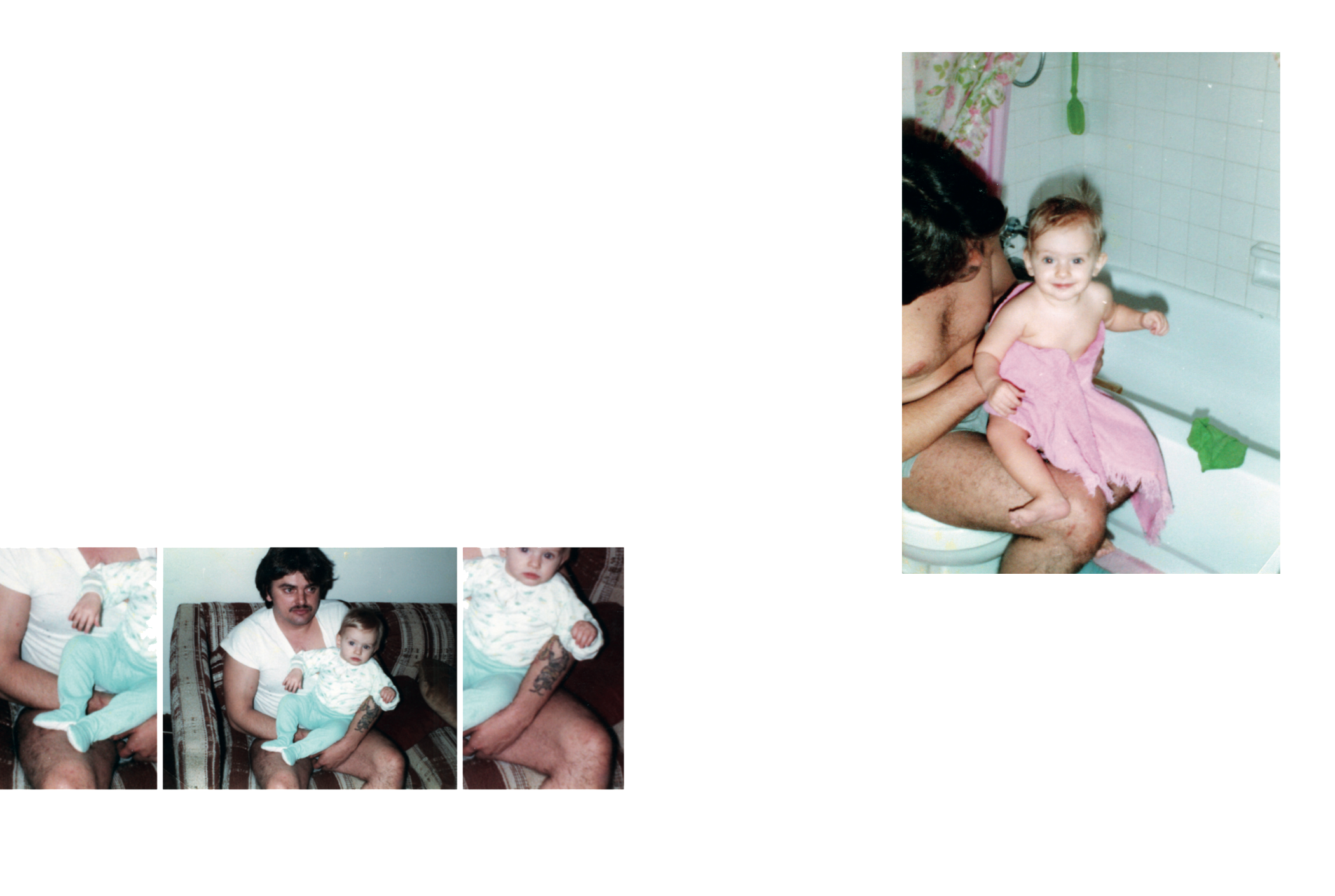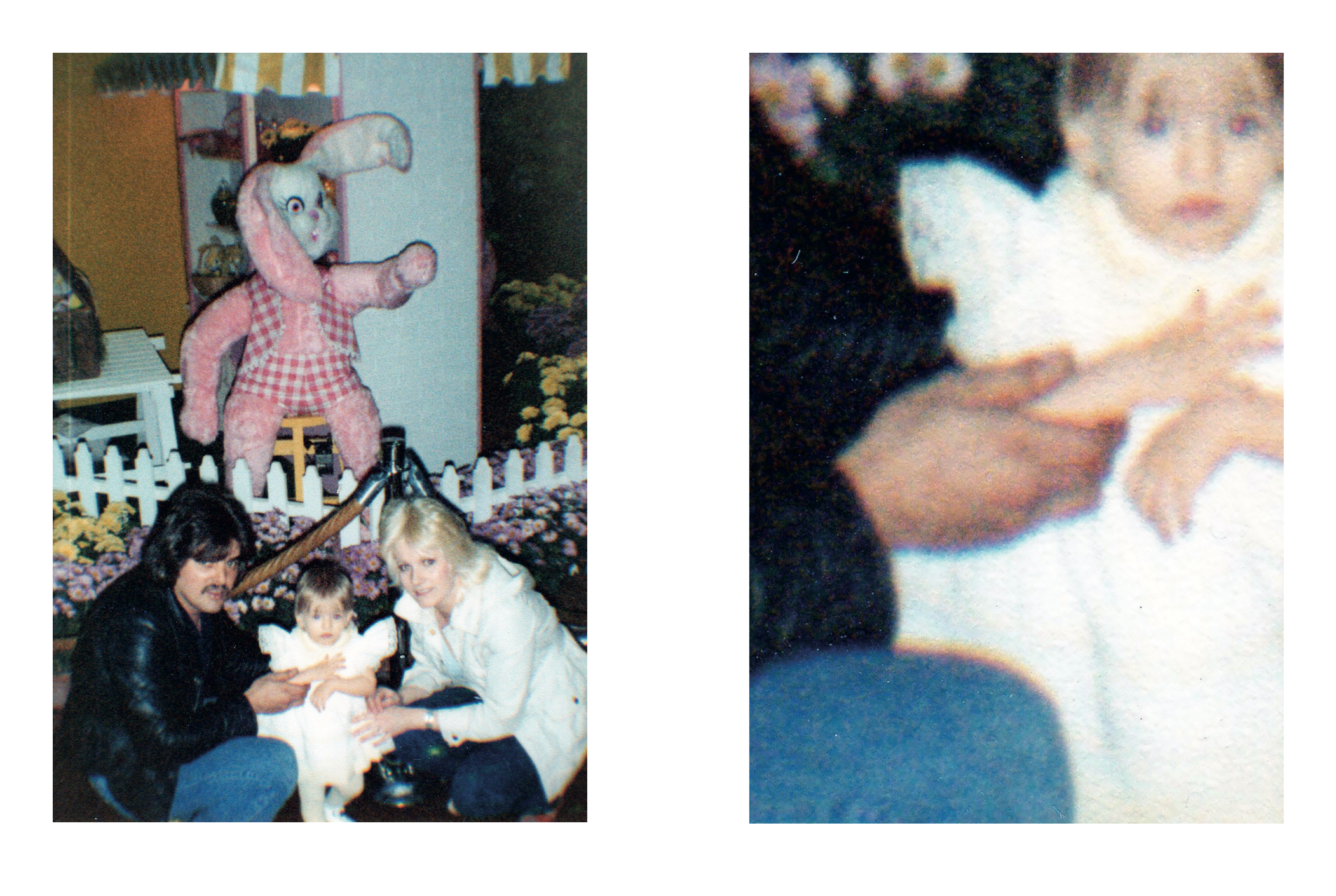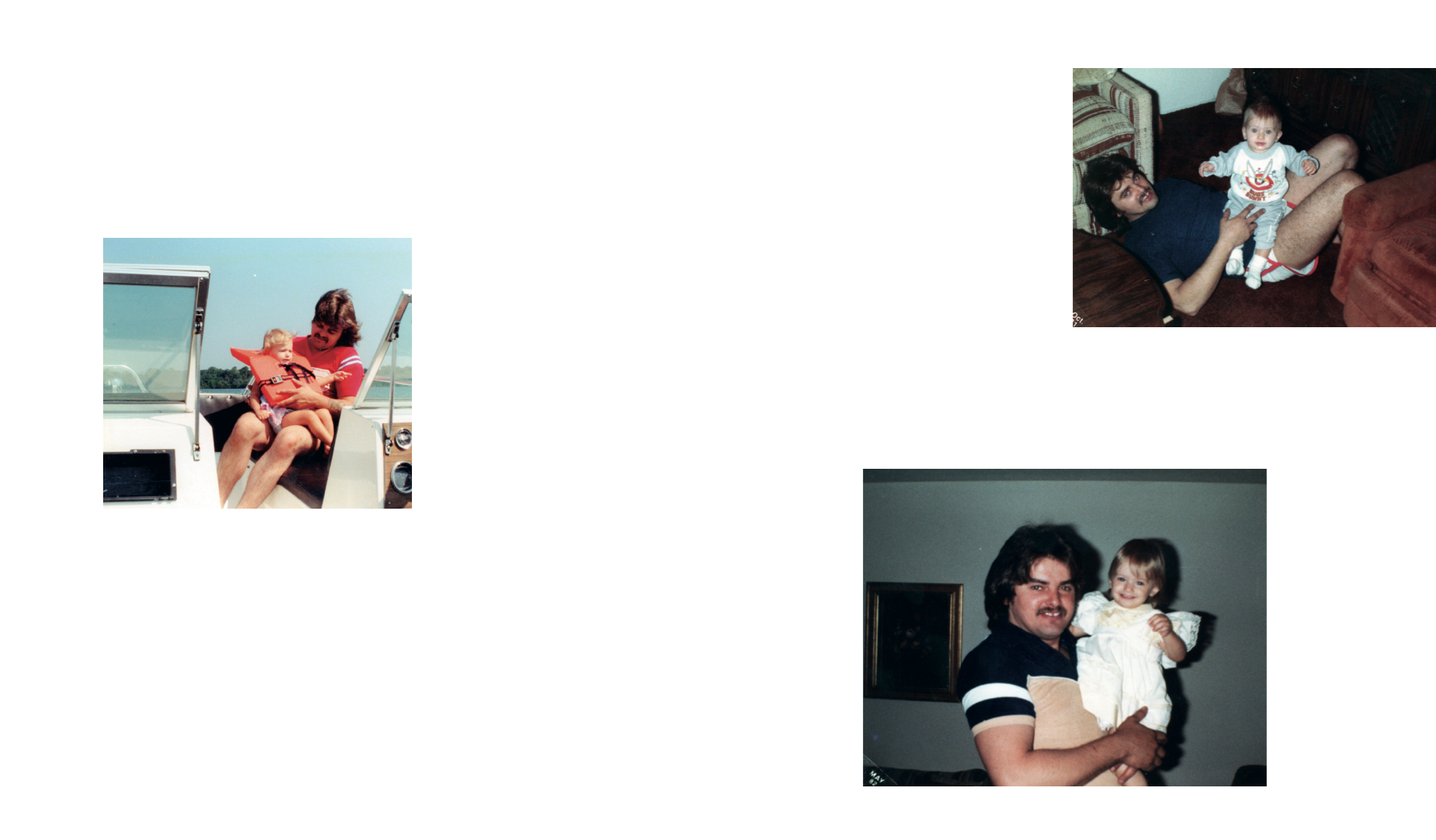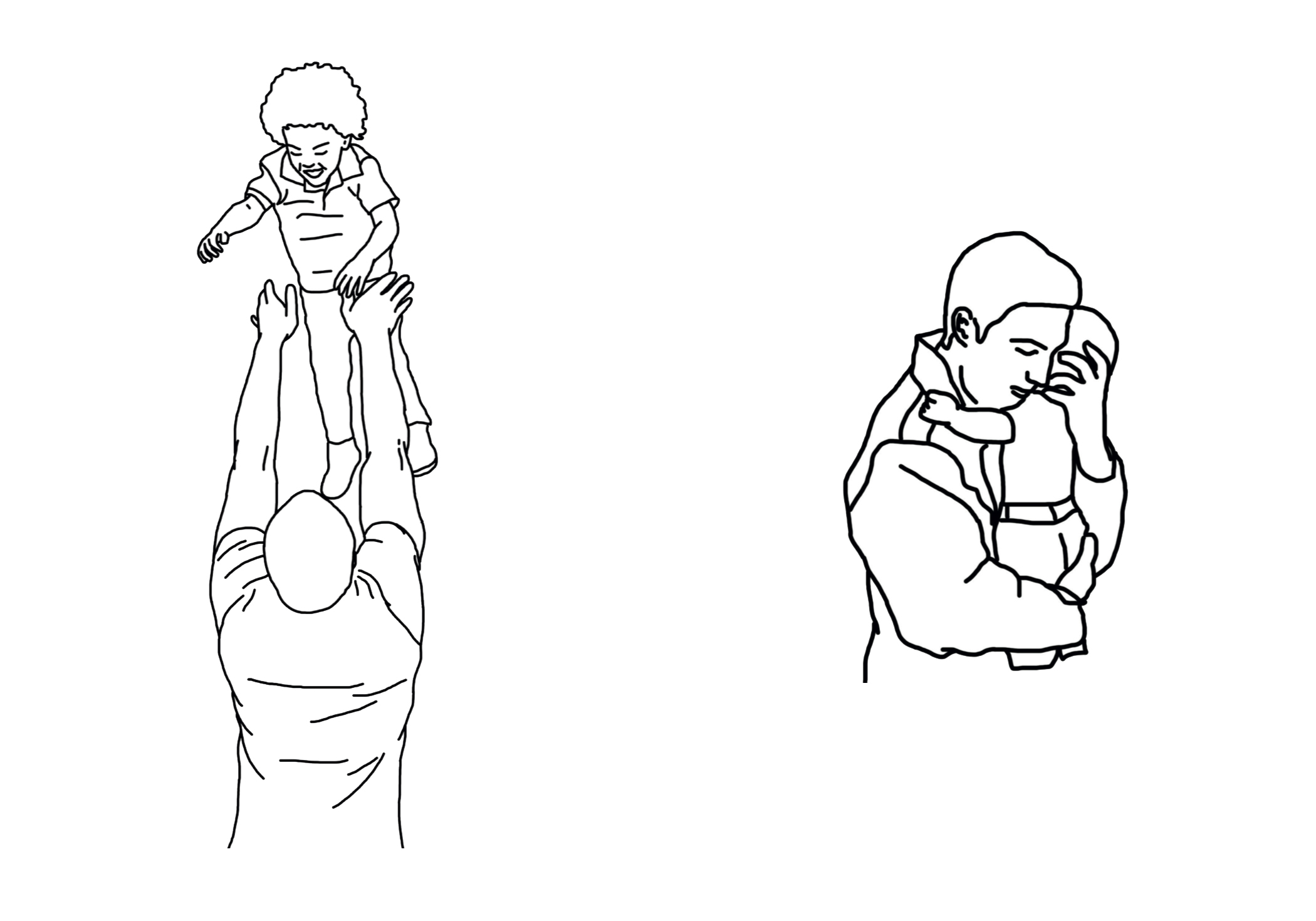DADS _2014/2019
1.a
-Their Absence-
I’ve ironically used photography to convey absence - a media often, and almost automatically used to reframe memory.
This series very much focuses on highlighting the loss of a relative, or their missing. As something physical and thus wishes to capture its essence.
By materializing the absence one is undeniably transforming it into an actual physical form.
One might forget features of a face but remembers the loss or sentiment of emptiness. I made new family albums from scratch with pictures I’d edit so they’d be more accurate in telling the story of our life. Aiming to create a visual discomfort by recreating in a way, pictures I grew up with.
They could have been thrown away but remained in the albums, either torn up or cut out which I’ve always found to be quite a powerful statement. As if we we going to ignore, to forget this gap in our family story and had forever to visualise its existence. Dads is a blunt testimony of absence, a disturbing hole in the most powerful piece of evidence.
You can’t forget what you’ve never known but can choose to remember its absence.
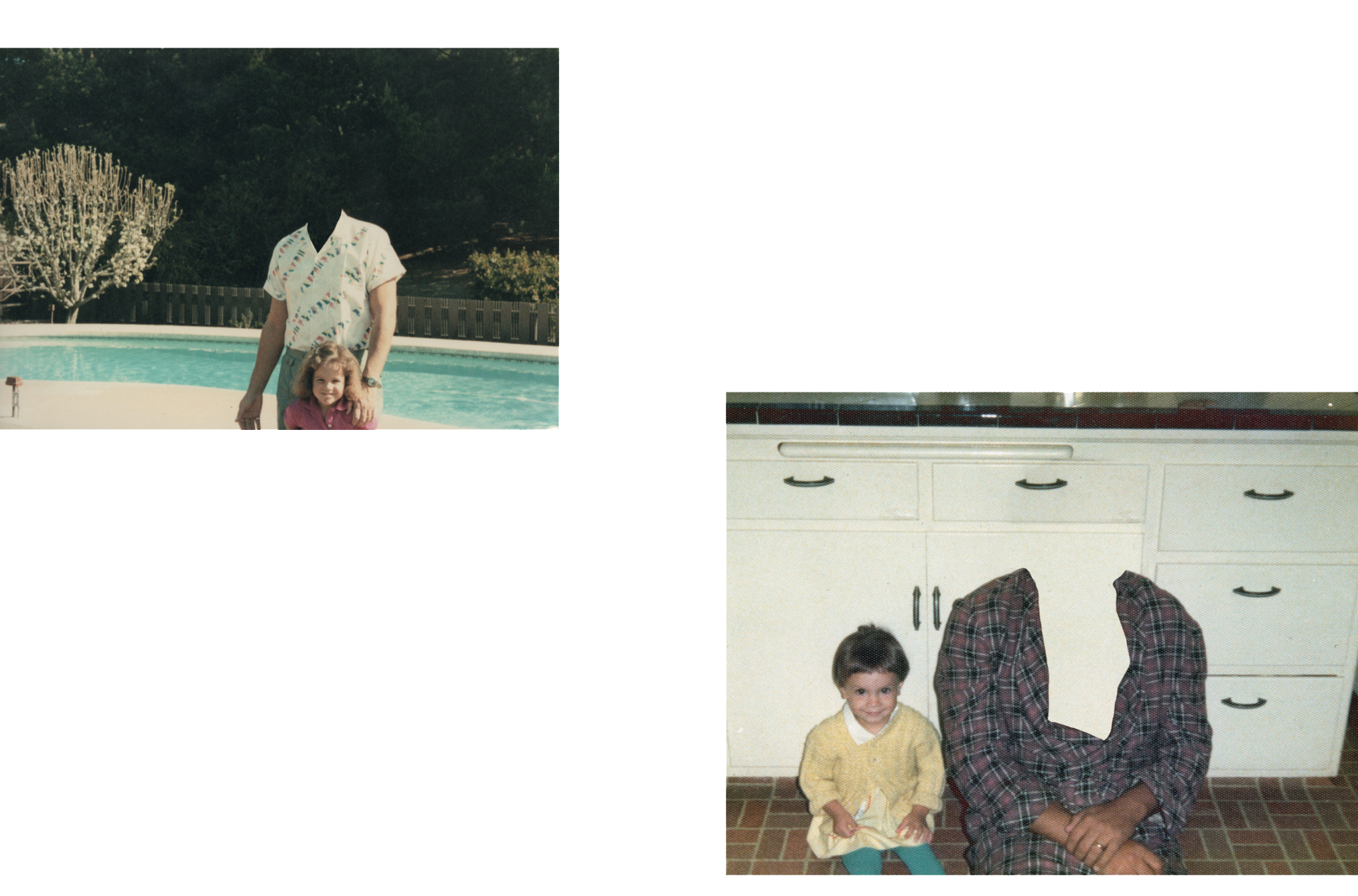
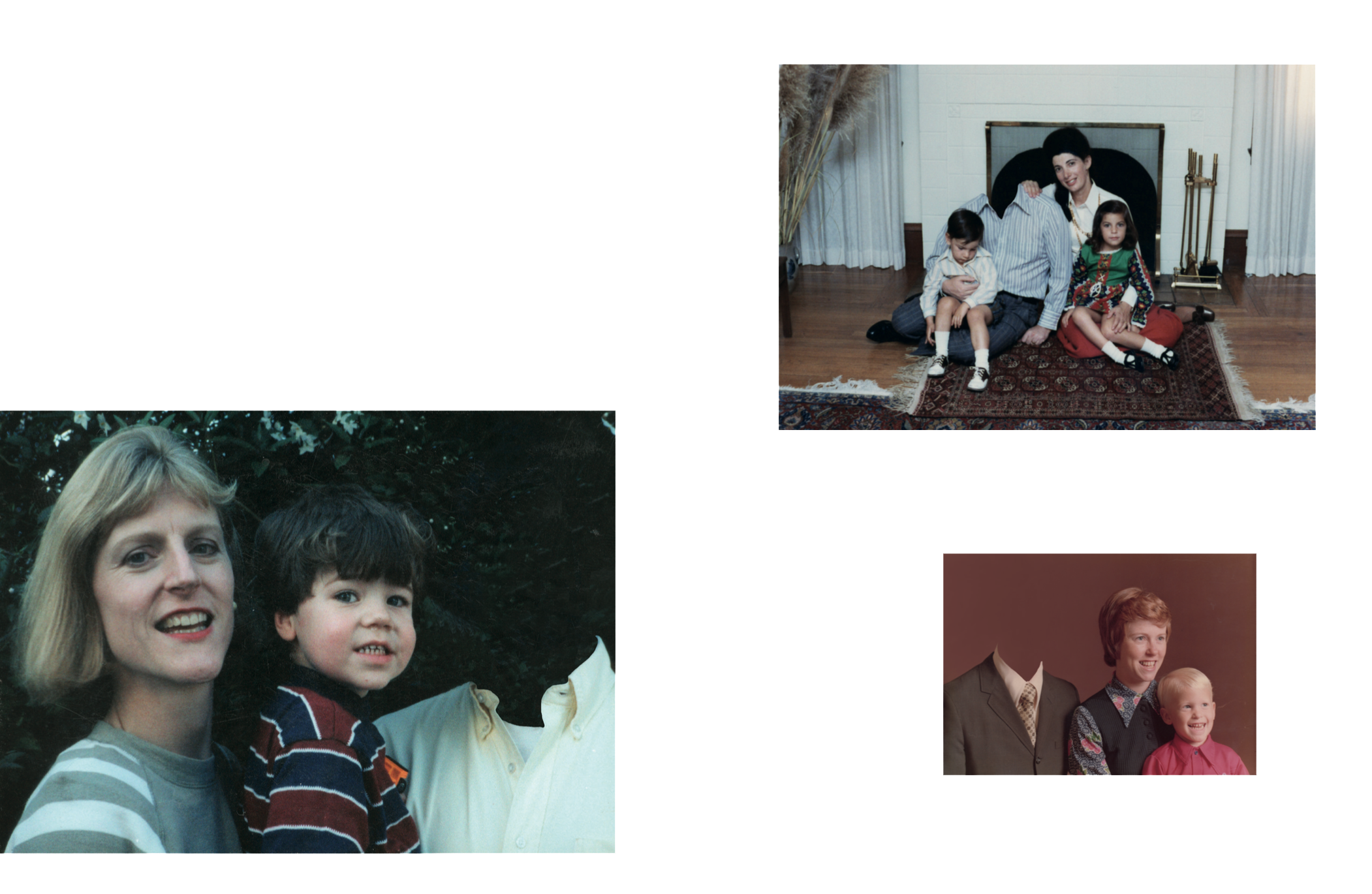
1.b
-The Ones That Are Here-
.Three testimonies from three men that have been fathers for 16 years, 3 years, and 7 weeks.
. A selection of favorite pictures

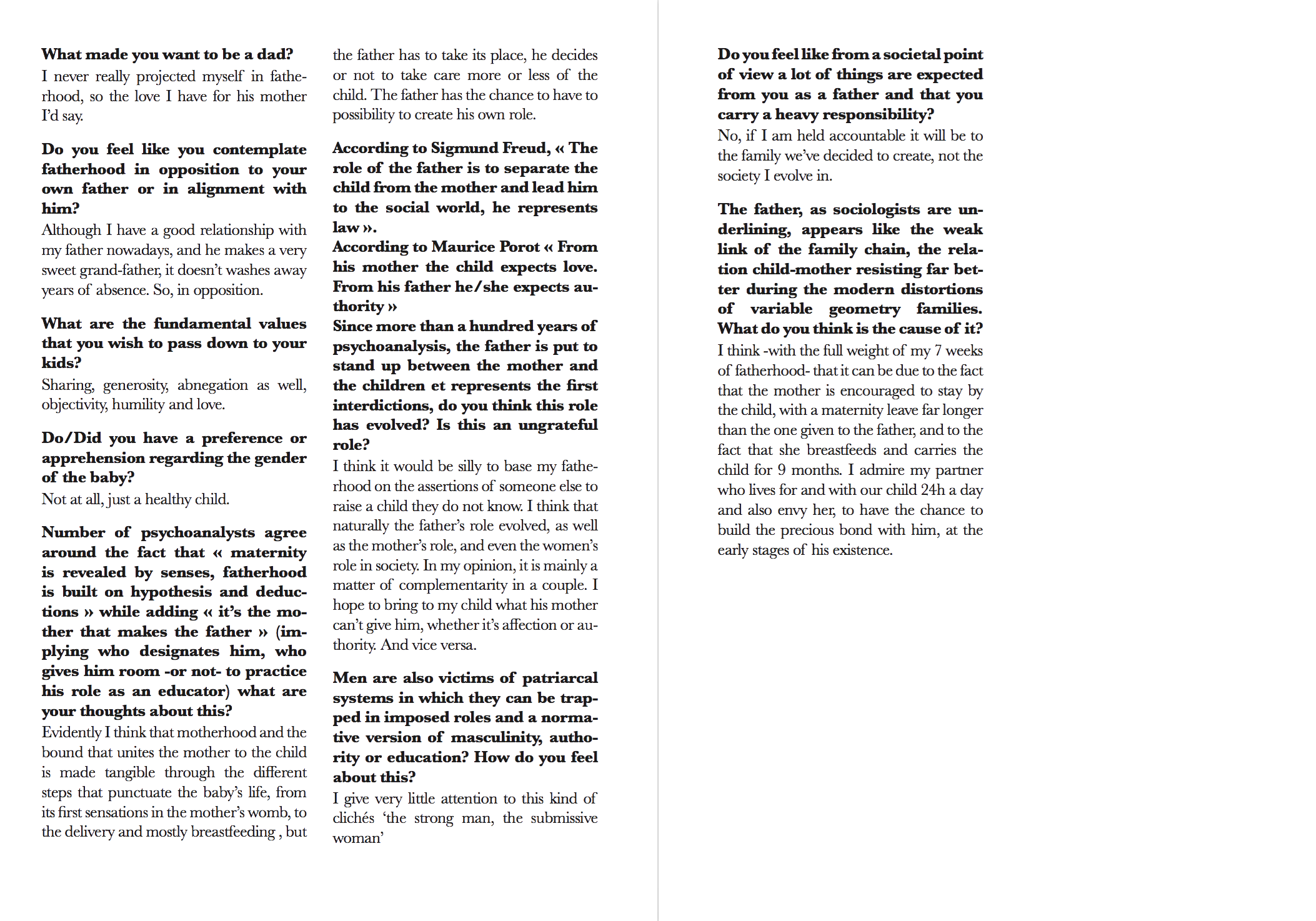
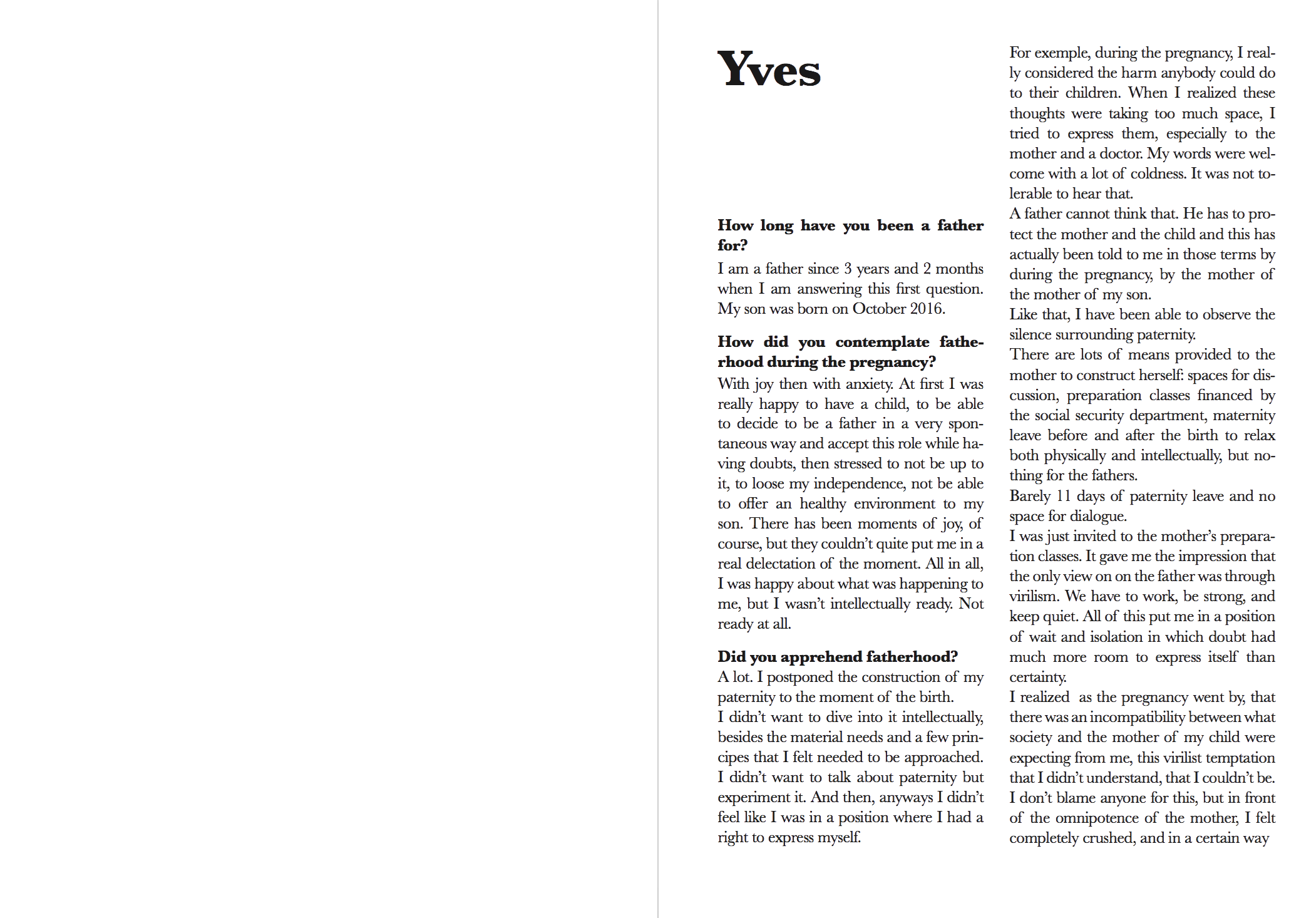
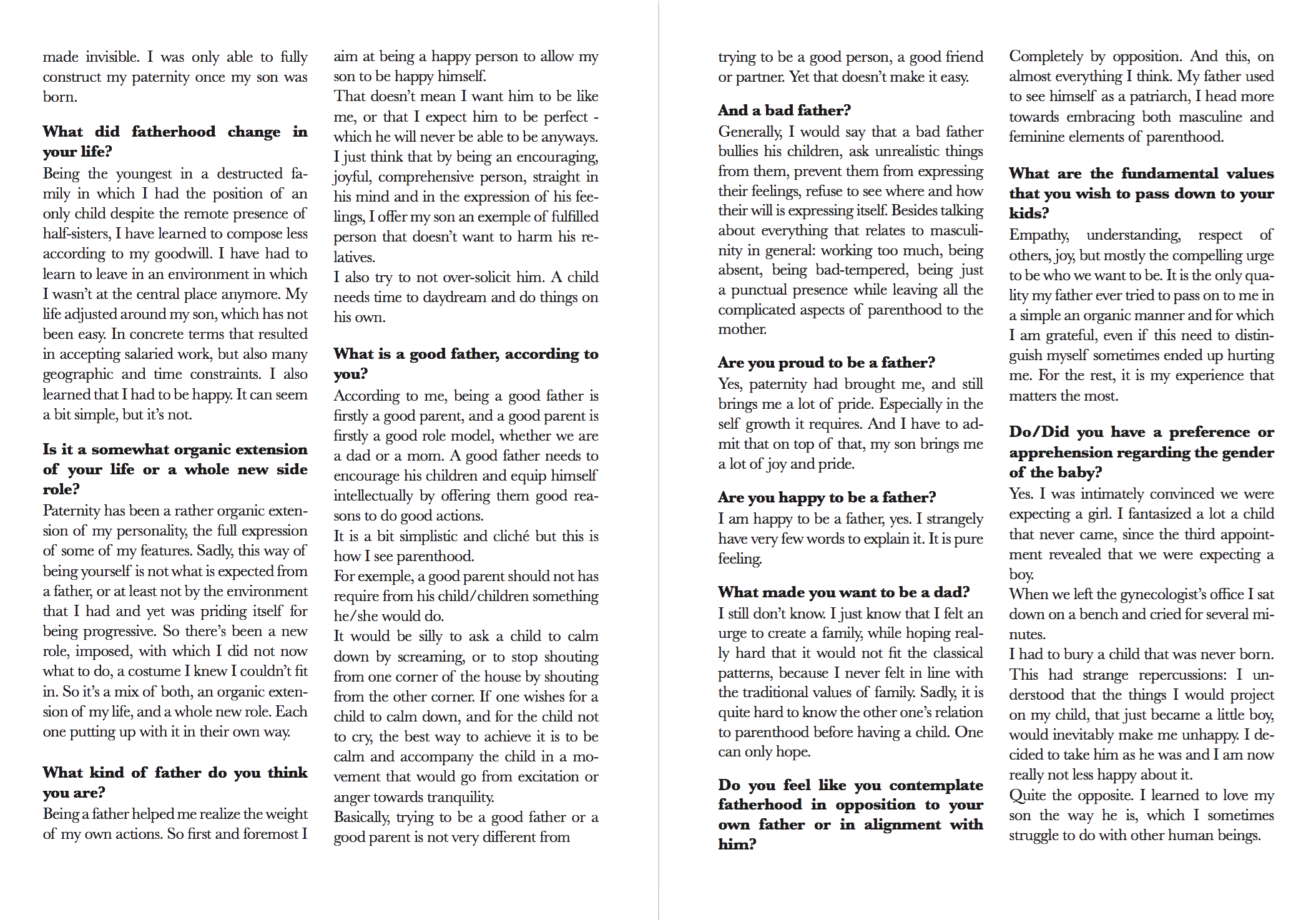


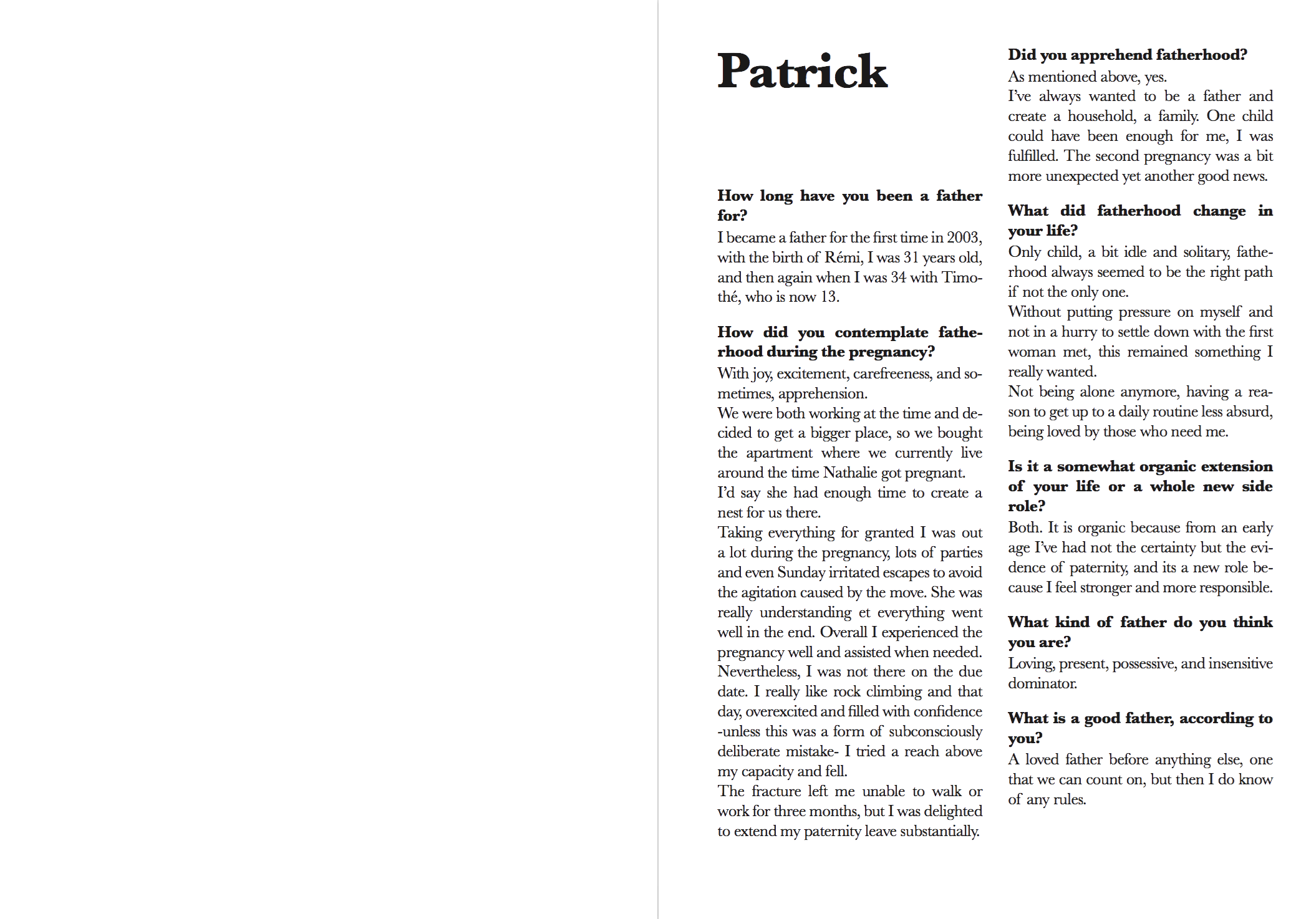



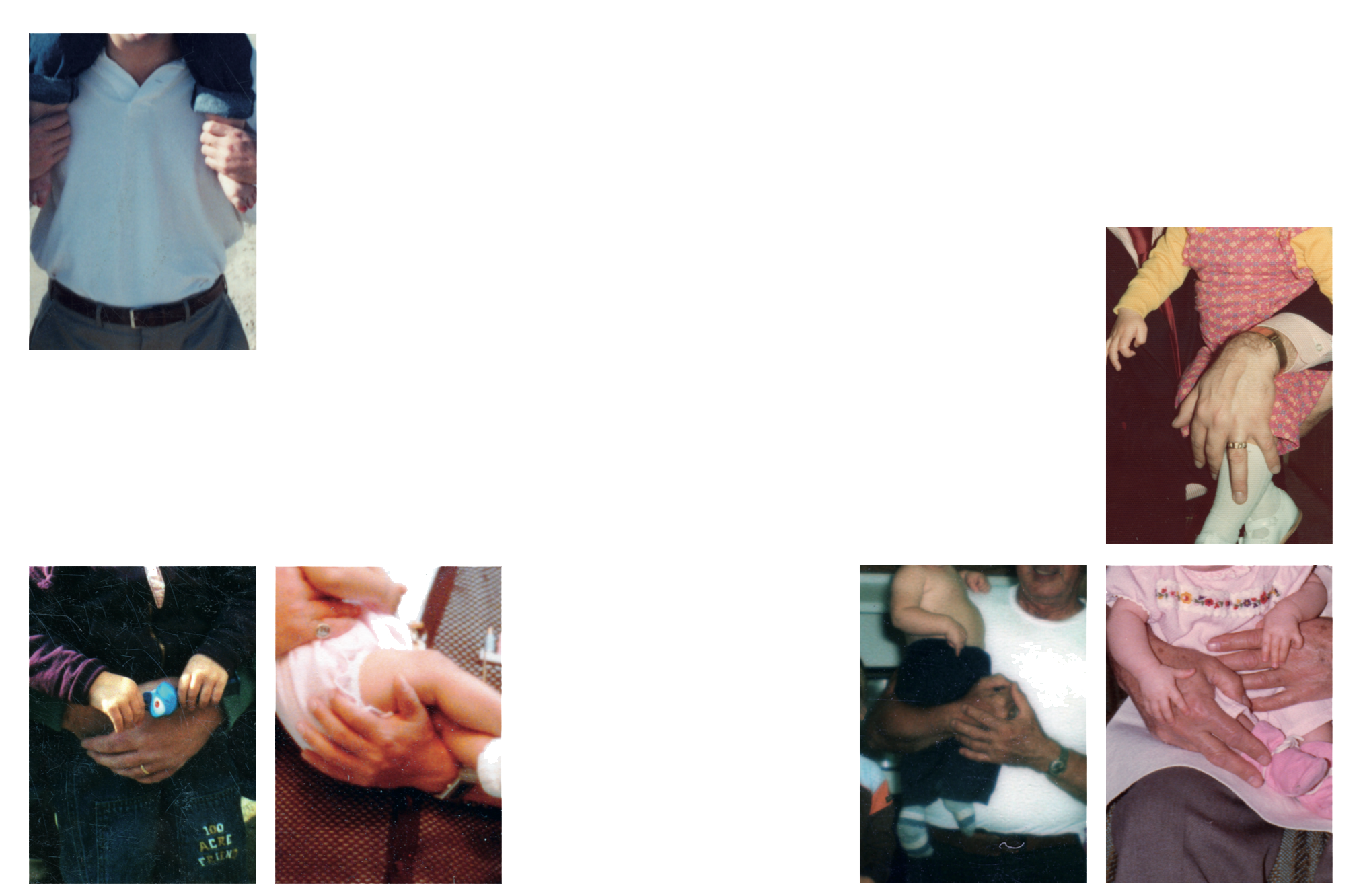

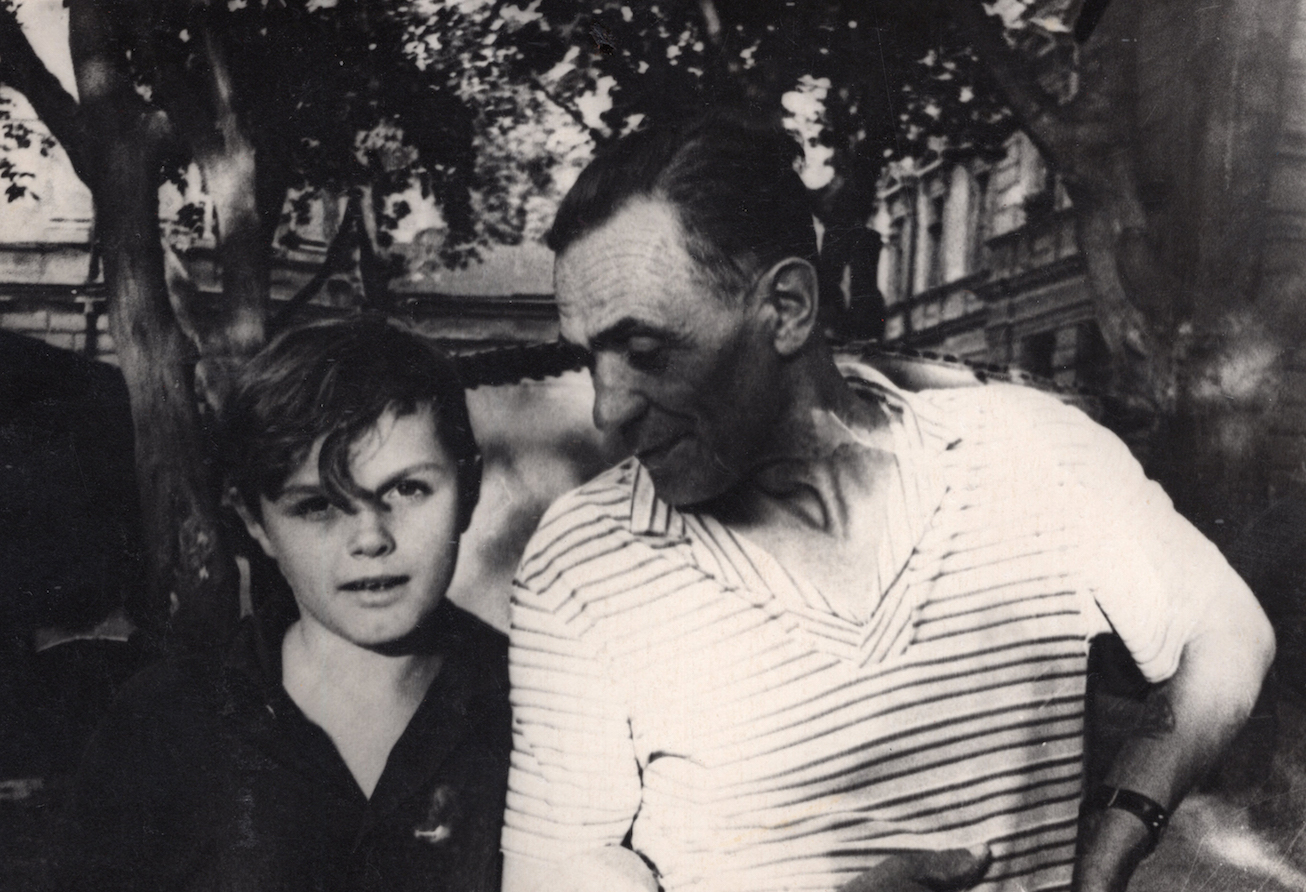

1.c
-Gestures & Features-
I use Google a lot in my researches.
Even though my main material comes from archives I spend a lot of time searching for what the web has to offer, and what its algorithms can highlight for me.
Obvious searches are ‘Father’, ‘Father Figure’, ‘Daddy Issues’, ‘Patriarchy’, but I also like to deepen my research with more narrowed down searches like ‘what does a father look like?’,‘best father ever’, ‘behaving like a father’, ‘patterns of fatherhood’, ‘do all father leave?’, ‘image of the worst father in HD’, ‘happy family with a father’, and so on...
Having a special interest for body language I focused on the gestures of fathers and downloaded the top four images that were coming back the most, and seemed to capture the essence of what a father behavior is, when he is with his child.
I noted that it was quite rare to see a father with more than one child -maybe they can only handle one at once- and that they were always either the fun parent or the protective one. Nothing in between. But then again maybe it is hard to visually represent this ‘in between’, this passive act of just ‘being there’.
I drew these four images by reflection of the photos on my computer screen.
![]()
![]()
I also compiled a series of portraits that were best representing what a respectable father looks like for me, and it stroke me that they were all white. Going back to internet I investigated a bit on the matter, and realized that there were in fact an impressive minority of black man coming up online when researching images of ‘Fathers’. They represent 7% to be more precise.
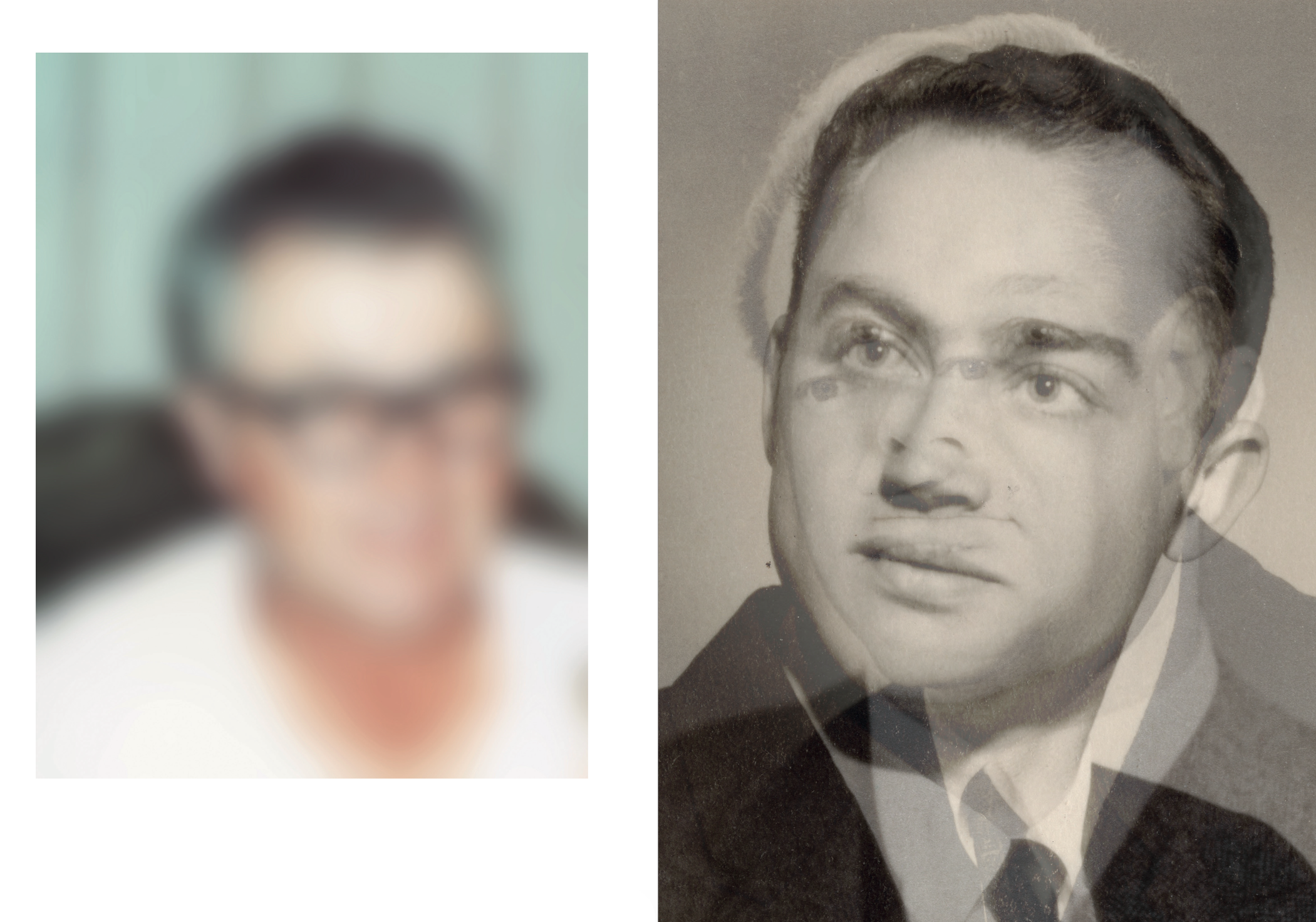


1.d
-Marcia’s Dad-
For four years in a row I kept going back to the same thrift store that had quickly became my main family photos supplier.
The store was a warehouse that looked more like a dump than an actual store and all the things sold there were coming from garbages. In a corner was the paper department, and in it, the photographs piles.
Searching through these piles
remain to this day some of the most exciting times I’ve had as a photographer.
But the most exciting part of it was to re-construct family albums through my numerous visits, and putting together pieces of a puzzle for which I did not know the scale.
My favorite re-construction was Marcia and her dad that spanned over three years of my life, and oddly enough, three years of hers.
Three years during which she appears with her dad -a man for which I found no name on the back of the pictures, just ‘dad’- that seemed, on paper, pretty involved and excited about his daughter.
Obviously something went wrong, otherwise I would not own these images, maybe one of them is gone, maybe they are looking for each other. Maybe I will find them.

